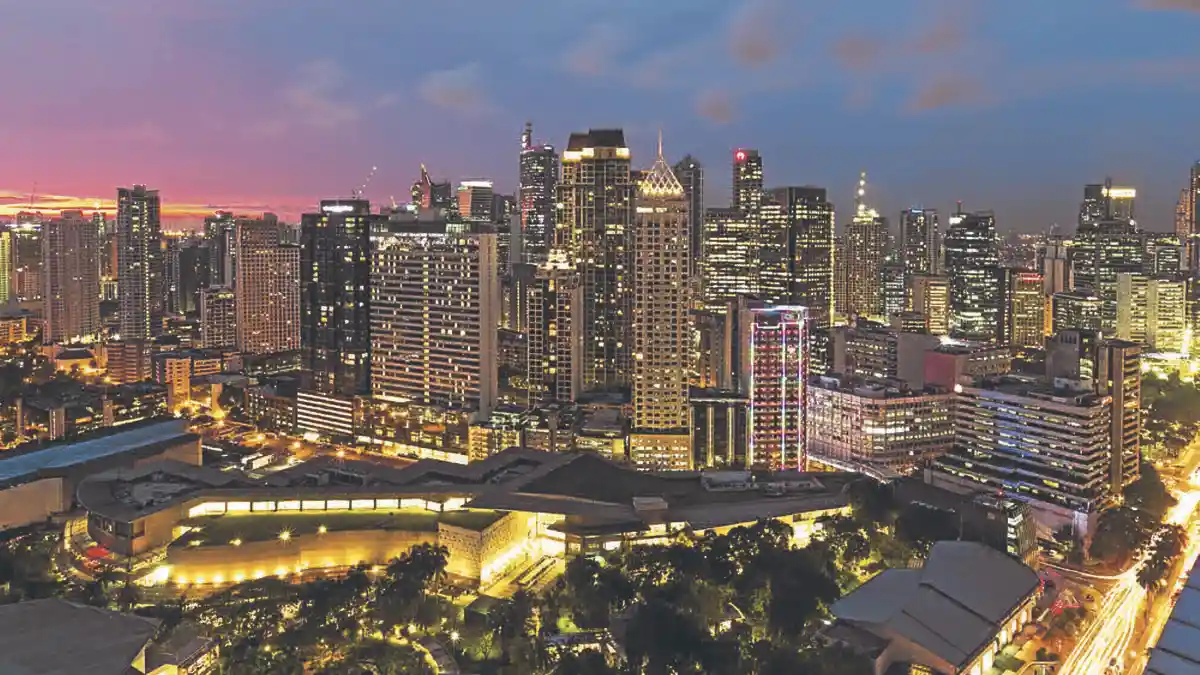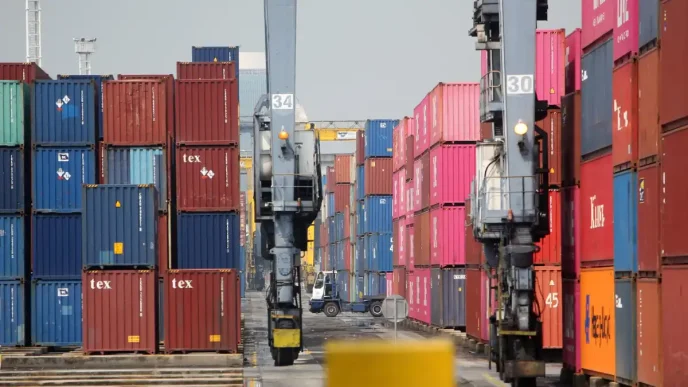Metro Manila’s residential property market is poised for a gradual recovery, with vacancy rates expected to decline by 2026 as developers curb new supply and offer aggressive promotions to attract buyers. According to Colliers Philippines, a leading real estate consultancy, the vacancy rate in the National Capital Region stood at 24.5 percent in the second quarter of 2025, a figure projected to peak at 25.8 percent by year-end before easing to 25.3 percent in 2026 and further to 23.4 percent by 2027. This shift signals a cautious optimism for the Philippine capital’s property sector, even as broader ASEAN real estate markets, including Thailand, grapple with oversupply and waning foreign investment.
Limited Supply and Faster Uptake in Metro Manila
The anticipated decline in Metro Manila’s vacancy rates hinges on a deliberate strategy by developers to limit new condominium completions. Joey Bondoc, research head at Colliers Philippines, highlighted during a recent briefing that reduced supply is a key driver. “Primarily it is because of the limited supply, meaning less completion in the Metro Manila condominium market” Bondoc explained. He also noted a positive trend in demand, suggesting that faster uptake of available units could further alleviate the vacancy burden.
Colliers’ data underscores this trend. In the second quarter of 2025, developers launched just 1,400 condominium units, a sharp drop from 5,300 units in the first quarter. While completions are expected to reach 8,600 units by the end of 2025—up from 7,800 in 2024—delivery is forecasted to taper off significantly, with only 6,200 units slated for 2026 and a mere 2,500 by 2027. This controlled pipeline reflects a strategic pivot by developers to balance supply with market absorption capacity.
Aggressive Promotions Fuel Demand
Beyond supply constraints, aggressive marketing strategies are playing a pivotal role in reducing vacancy. Richard Raymundo, managing director at Colliers, pointed to unprecedented discounts and promotions as a major factor. “The promos that were instituted in the last quarter worked because we haven’t seen promos as aggressive as this” Raymundo stated. Some developers have offered discounts of up to 50 percent on total unit prices for buyers making full, immediate cash payments—a stark contrast to the modest 10 percent discounts seen before the current oversupply glut.
These incentives appear to be yielding results. Colliers reported a 25 percent reduction in purchase cancellations, or contract back-outs, with the figure dropping to 3,600 units in the second quarter of 2025 compared to the first. “It seems to be working because we’re seeing that the back-outs have gone down” Raymundo observed. This decline in cancellations suggests growing buyer confidence, bolstered by financial incentives that make purchasing more accessible amid economic uncertainties.
Market Segmentation and Luxury Appeal
Despite the overall high vacancy, not all market segments in Metro Manila are struggling equally. As of the second quarter of 2025, approximately 30,500 ready-for-occupancy units remained unsold across the region. Of these, the upscale and luxury segments—units priced between 12 million Philippine Pesos (PHP) (~US$213,000) and over PHP 20 million (~US$355,000)—accounted for just 10 percent of the total inventory. In contrast, lower middle-income units (PHP 3.6 million to PHP 6.99 million, or ~US$64,000 to US$124,000) made up 32 percent, while upper middle-income units (PHP 7 million to PHP 11.99 million, or ~US$124,000 to US$213,000) comprised 14 percent.
Bondoc noted a distinct preference for higher-end properties, with developers increasingly focusing on the luxury market. “They are looking at which segment will be more attractive to the market, and right now, it appears that the upscale and luxury segments remain well-performing and, in fact, are a cut above the rest” he said. Major players like Megaworld Corp., through its Signature Collection, and SM Prime Holdings Inc., via its Signature Series under the SM Residences brand, have recently entered this space, betting on sustained demand from affluent buyers.
Regional Context: Thailand’s Property Struggles
While Metro Manila shows signs of stabilization, the broader ASEAN real estate landscape reveals a more uneven picture. In Thailand, particularly in key markets like Bangkok and Phuket, the property sector faces significant headwinds. Bangkok’s condominium market is currently experiencing a pronounced downturn, with sales and sentiment among developers hitting historic lows in 2025. According to the Real Estate Information Center (REIC), the Housing Developer’s Sentiment Index for Greater Bangkok dropped to 39.3 in the second quarter of 2025, down 2.7 points from the prior quarter. This marks the third-lowest level recorded since the survey’s inception, surpassed only by the aftermath of the 2011 floods (37.1) and the 2008 global financial crisis (37.3).
The REIC data paints a grim picture of Bangkok’s residential market. Newly launched units in Greater Bangkok fell to 13,867, valued at 84 billion Thai Baht (~US$2.4 billion), reflecting a year-on-year decline of 15.6 percent in volume and 30 percent in value. New sales plummeted by 29.3 percent in unit terms and 25.6 percent in value, totaling 11,314 units worth 68.4 billion Thai Baht (~US$1.95 billion). Consequently, unsold inventory swelled to 237,571 units, with a combined value of 1.45 trillion Thai Baht (~US$41.4 billion), up 11.4 percent in volume and 18.6 percent in value from the previous year.
In Phuket, a popular destination for foreign investors, the market has also cooled. The downturn in interest from Chinese buyers—historically a dominant force in off-plan purchases—has created opportunities for other foreign investors, such as those from Russia and India. However, the overall pace of sales remains sluggish, contributing to a cautious outlook for Thailand’s luxury and mid-tier property segments.
ASEAN Real Estate: Challenges and Opportunities
The contrasting fortunes of Metro Manila and Bangkok highlight the complex dynamics at play across the ASEAN real estate sector. Economic and demographic shifts, coupled with varying levels of foreign investment, continue to shape market trajectories in the region. In the Philippines, developers’ proactive measures—curtailing supply and offering steep discounts—appear to be stabilizing the market, particularly in the luxury segment where demand remains robust. Thailand, however, faces deeper structural challenges, with oversupply and declining buyer sentiment weighing heavily on recovery prospects.
Karel Engelbrecht, an experienced buyers agent in Phuket, Thailand, explained how the downturn in Chinese interest on the island had led to more buying opportunity for other foreign investors. “Russian and Indian investors are buying where traditionally Chinese investors would have purchased off-plan but the rate of sales has indeed slowed. For me, business is still good and Phuket is a luxury destination for many so I think that it will bounce back again within the year.”
Bangkok has seen a significant downturn in condo sales in 2025 and is currently in a market-low. Engelbrecht said “There is no doubt that the market has quietened, not only in Phuket but also Bangkok.” The sentiment index of Greater Bangkok housing developers dropped to its third-lowest level in the second quarter of 2025, behind the massive floods in 2011 and the global financial crisis in 2008, even sinking below sentiment during the pandemic. According to the Real Estate Information Center (REIC), the Housing Developer’s Sentiment Index tallied 39.3 in the second quarter of 2025, down 2.7 points from the previous quarter.
Yet, opportunities persist for forward-thinking markets. Urban housing demands, foreign investment-friendly policies, and sustainable development initiatives could position certain ASEAN countries for long-term growth. For instance, the Philippines’ focus on high-end developments aligns with a growing affluent class and returning overseas Filipino workers seeking premium properties. Similarly, Thailand’s established appeal as a tourist and retirement destination, particularly in areas like Phuket, suggests potential for a rebound if macroeconomic conditions improve and foreign buyer confidence is restored.
Economic Implications and Future Outlook
The trajectory of Metro Manila’s residential market carries broader implications for the Philippine economy. A sustained decline in vacancy rates could bolster developer confidence, encouraging reinvestment in infrastructure and mixed-use projects that cater to urban growth. However, this recovery must be balanced against inflationary pressures and interest rate hikes, which could dampen buyer affordability if not managed carefully. The central bank, Bangko Sentral ng Pilipinas, will likely play a critical role in maintaining economic stability to support real estate demand.
In Thailand, the property sector’s struggles reflect wider economic challenges, including a slow post-pandemic recovery and geopolitical uncertainties affecting foreign investment. The sharp rise in unsold inventory in Greater Bangkok signals a need for policy interventions, such as incentives for first-time buyers or streamlined regulations for foreign ownership, to stimulate demand. Without such measures, the market risks a prolonged stagnation that could ripple through related industries like construction and finance.
Across ASEAN, the real estate sector remains a barometer of economic health and investor sentiment. While Metro Manila’s gradual recovery offers a glimmer of hope, the region’s diverse markets underscore the importance of tailored strategies. Investors and policymakers alike must navigate these evolving conditions with agility, balancing short-term stabilization efforts with long-term visions for sustainable urban development.
As Metro Manila’s vacancy rates edge downward and Thailand grapples with oversupply, the ASEAN property landscape stands at a crossroads. Will strategic adjustments by developers and governments pave the way for a broader recovery, or will economic headwinds prolong the sector’s challenges? The answers remain uncertain, but the stakes for urban growth and economic vitality could not be higher.
















